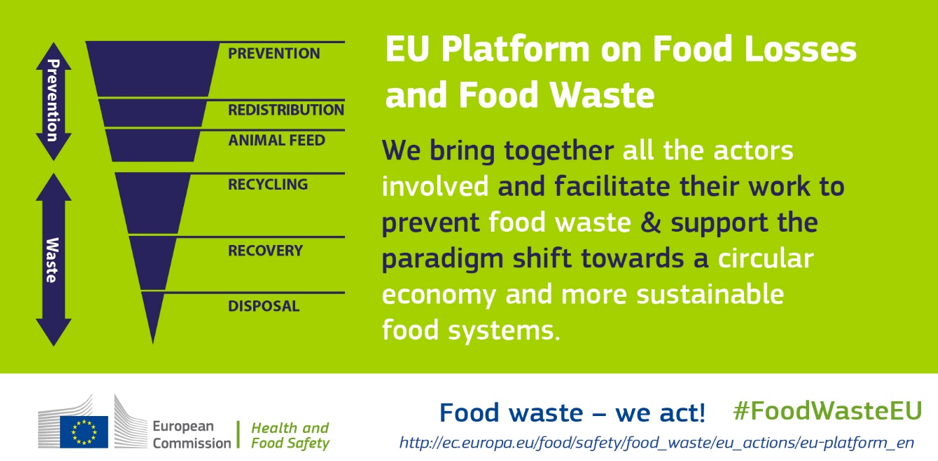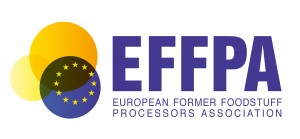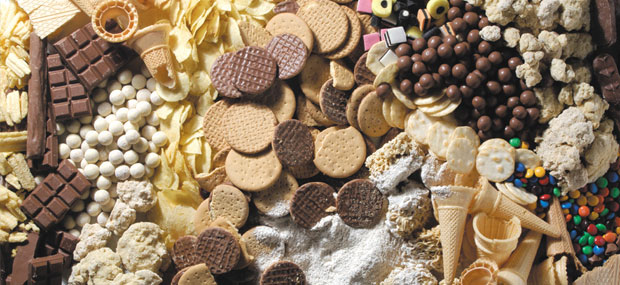The original article can be found on the European Livestock Voice website here: https://meatthefacts.eu/home/activity/beyond-the-headlines/animal-husbandry-and-circular-economy-the-importance-of-former-foodstuff/
An overlooked fact about the livestock sector and the protection of the environment and natural resources is that: livestock supply chains are virtually fully circular. Livestock can implement well the circular economy. For example, hundreds of products are obtained from a single cow or pig, and emissions can be reduced by producing biogas and biomethane valorizing the manure. One significant but lesser-known way is through the upcycling of so-called “former foodstuffs“, usually defined as “biscuit meal” or “bread meal”.
We spoke to Valentina Massa: “a mother and businesswoman in the circular feed sector”, and the European Former Foodstuff Processors Association (EFFPA) president.
What is EFFPA, and what does it do?
EFFPA is the European – but de facto international – association representing the sector of former foodstuff processors. Our members are national associations (the United Kingdom, France, Germany, and the Netherlands) and significant companies representing key markets (Belgium, Spain and Portugal, Italy, Greece, Denmark, Canada and the USA). It is estimated that five million tonnes of former foodstuffs are processed annually in Europe, of which 3.5 million tonnes are processed in the European countries where EFFPA is active.
Where does the ex-food destined to produce animal feed come from?
The correct term is former foodstuff. The definition set out in EU Regulation (EU 1104/2022) states, “Former foodstuffs’ means foodstuffs, other than catering reflux, which were manufactured for human consumption in full compliance with the EU food law but which are no longer intended for human consumption for practical or logistical reasons or due to problems of manufacturing or packaging defects or other defects and which do not present any health risks when used as feed(…)”. Since they are former foodstuffs, they come mainly from the food manufacturing industries as individual ingredients, intermediate products and finished products with mislabeling, packaging errors, etc. But they can also come from distribution and retail logistics centres.
An exceptional feature of former foodstuff is that, within the livestock value chain, they allow for considerable savings in water consumption, carbon footprint and land use by replacing “traditional” raw materials from the primary feed sector. Several Life Cycle Assessment studies have shown a significant advantage for the environment in favouring these circular ingredients.
What is the difference between food waste and food with characteristics that can be transformed into the feed?
Food waste, by definition, means any substance or product, whether processed, partially processed or unprocessed, intended to be, or reasonably expected to be ingested by humans which (Ref Reg. Ce 178/02 art. 2) for various reasons has lost the purpose of being ingested by humans, and it is not destined as a feed ingredient. In other words, food is not eaten and goes out of the feed and food chain. Feed is excluded from this definition because the nutritional part is “saved” in the feed chain. It is important to emphasize that waste cannot be part of the food or feed chain. The European Commission and the UN SDGs share the goal of halving food waste by 2030.
Translating the term ‘waste’ into different languages can be slightly unhelpful for former foodstuffs. For example, what in Italian is defined as a “waste” takes a different connotation of rejection in English. EFFPA has always supported the concept of circular raw materials as it is the best reuse in terms of the circular economy immediately after the use for human food. It is not in competition with human food (because it is defined as former foodstuff only if no longer intended for human consumption). It guarantees the reduction of food waste, as it reduces the use of “traditional” resources from the primary/agricultural sector and, therefore, less use of water, land and fertilizers.
The fact that it starts as feed material and not as waste allows for maximum feed safety and traceability, as all feed system operators implement a Hazard Analysis and Critical Control Points (HACCP) system – a preventive approach to increase food safety by avoiding hazards in production processes that would make the final product unsafe – and ensured traceability to reduce and minimize any risk.

How can we guarantee total food safety in producing feed from “former foodstuff”?
The guarantee of safety is based on five pillars:
- Specific technical and plant engineering capacity for the type of ex-food product and packaging to ensure maximum food safety.
- According to HACCP management, organizations with advanced traceability systems manage, prevent, monitor and minimize any risk.
- Logistic and storage capacity suitable for the specific types of former foodstuff to ensure timeliness and correct transport and storage rules.
- Synergy and collaboration with food business operators in risk prevention and HACCP management to effectively make the circular economy a valuable and durable asset in food safety.
- Synergy and collaboration with research centres and the feed industry to improve the response to the needs of modern animal husbandry.
Beyond the value of a circular economy, can your work support the supply chains also in terms of food security? Especially in times of war and scarcity or supply disruption…
It is currently estimated that five million tonnes of former foodstuff products are produced annually in Europe. Using these ingredients can partially replace cereal grains, oils and sugars in livestock rations: it is an actual nutritional efficiency. For years, we have contributed to a more sustainable food chain, producing less waste and enhancing circular ingredients in feed. Working with the food distribution and retail sectors to improve their know-how will help towards our goal of reducing food wastage. This still needs development.
At the moment, the conflict in Ukraine has further exacerbated the tension also for energy supply. The risk is that all the work done to date – and with it, the efficiency obtained with the former-foodstuff products and other food by-products in the feed chain – will be sidelined by incentives to increase energy production that certainly serve but may not be defined as sustainable, when produced with feed ingredients instead of residues without other potential uses. To give a simple example, would you heat your home by burning the food stored in your pantry? Indeed, it would generate heat, but at what cost? And then what will you eat? We need to think about the proper allocation of resources and avoid silo-thinking, now more than ever when scarcity is a reality.
In several decades of activity in the circular economy, we have learned that it is necessary to continuously collaborate constructively with the various sectors in compliance with the laws. We are convinced that the food industries, policymakers and consumers will agree we must protect our food and feed system and find the right way to implement renewable energy.

